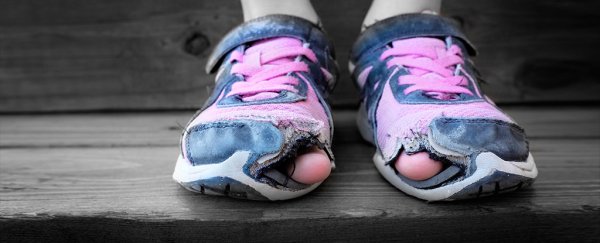People from relatively low socioeconomic backgrounds are more likely to have their pain sensitivity dismissed by others, according to a new series of psychological experiments.
Even medical professionals don't seem to take another's suffering as seriously if they are relatively uneducated or poor – they may even prescribe less medication.
The results could partly explain why patients with higher levels of education, income and social status tend to receive better medical care for a variety of painful conditions in the United States. No doubt, there are also structural issues at play, like a sheer lack of access to medical care, but broader cultural stereotypes appear to also play a role.
Pain is an incredibly difficult symptom to both express and interpret. While the experience of suffering is universal, its measurement is necessarily subjective and is open to a slew of human biases.
To date, there is well-documented research to show the pain of Black Americans is systematically under-diagnosed and under-treated. Other studies that dig into sex differences have shown female pain is also consistently underestimated. Both factors together can have an additive effect, as appears to be the case when interpreting Black women's pain.
A person's socioeconomic status (SES) could very well overlap with these factors, but the current study is one of the first to explore this idea in any detail.
Across ten experiments, including over 1,500 participants, researchers consistently found disparities in how people regarded and treated another person's pain, depending on their education level, occupation and income.
A waiter, for instance, was usually considered in less pain than a lawyer, and that was found to be true no matter the sex or race of the patient in question.
"Simply knowing a friend's or stranger's socioeconomic status (which research suggests can readily be inferred from subtle verbal and nonverbal cues) may influence how much pain is attributed to them and therefore how much support is offered," psychologist Kevin Summers from the University of Denver told PsyPost.
"For example, a passerby may ignore a low-SES stranger who fell on the sidewalk, a friend may suggest that a lower-SES friend just 'deal with' an injury rather than seek medical attention, a boss may give less time off or paid compensation to a lower-SES injured employee."
Of course, those are real-world examples and the study itself was conducted in the lab. More research will be needed to determine how these simple experiments translate to actual doctor visits or emergency events, but these results do give us an indication of biases present.
The study began with a simple test to see how a person judges the pain of someone else when they are only aware of their socioeconomic status. The first trial included 126 participants who viewed and rated perceived pain sensitivity across 18 pain scenarios for 20 white male subjects – represented by neutral images of their faces and information about their jobs.
Those with low-income jobs and lower levels of education were generally rated as feeling less pain than those who ostensibly held high-income jobs and higher levels of education, even when they were said to hurt themselves in the exact same way.
In a slight variation on the experiment where no photos were shown and only a story was read with descriptions of subjects such as "low-SES white females", 248 participants found individuals with a lower socioeconomic status were perceived as being less sensitive to pain than those with a higher socioeconomic status, even when their described injury was exactly the same.
Follow-up trials included factors like sex and race to see how these variables might interact with the results. While Black patients and female patients tended to have their pain dismissed more than white and male patients, the authors found social status actually subsumed these other biases.
To figure out why a person's socioeconomic status seems to have such a big impact on how their pain is treated, researchers conducted a fourth experiment with 111 participants.
Once again, a target image was shown to participants, but this time, volunteers had to evaluate the patient's pain sensitivity as well as their life experiences and hardships. To determine this, participants were asked questions like, "How hard do you think his/her life has been?".
The results suggest people tend to believe life hardship "toughens" those from lower socioeconomic backgrounds, making them more immune to pain.
Not only do we seem to regularly under-diagnose the pain of poorer people, the study suggests we regularly under-treat this group, too.
Further experiments comparing lay people and medical professionals found both groups would prescribe less pain medication to those from lower socioeconomic backgrounds.
"Again, we found that perceivers believed that low-socioeconomic status individuals required less pain treatment than high-socioeconomic individuals, and this effect was mediated by perceptions of the target's pain sensitivity," the authors write.
"That is, perceivers rated low-socioeconomic status targets as feeling less pain than high-socioeconomic status targets and thus as requiring less pain treatment to relieve pain."
The study was only conducted in the lab with images of faces, which is very different to a proper doctor's office where the patient is seen face-to-face. This may have ultimately impacted a doctor's decision to prescribe pain medication or not.
That said, because medical providers are directly involved in managing a patient's pain, the findings from the current study are concerning.
They suggest doctor bias is part of the reason why those with lower socioeconomic backgrounds are consistently receiving substandard pain care in the United States.
The study was published in the Journal of Experimental Social Psychology.
